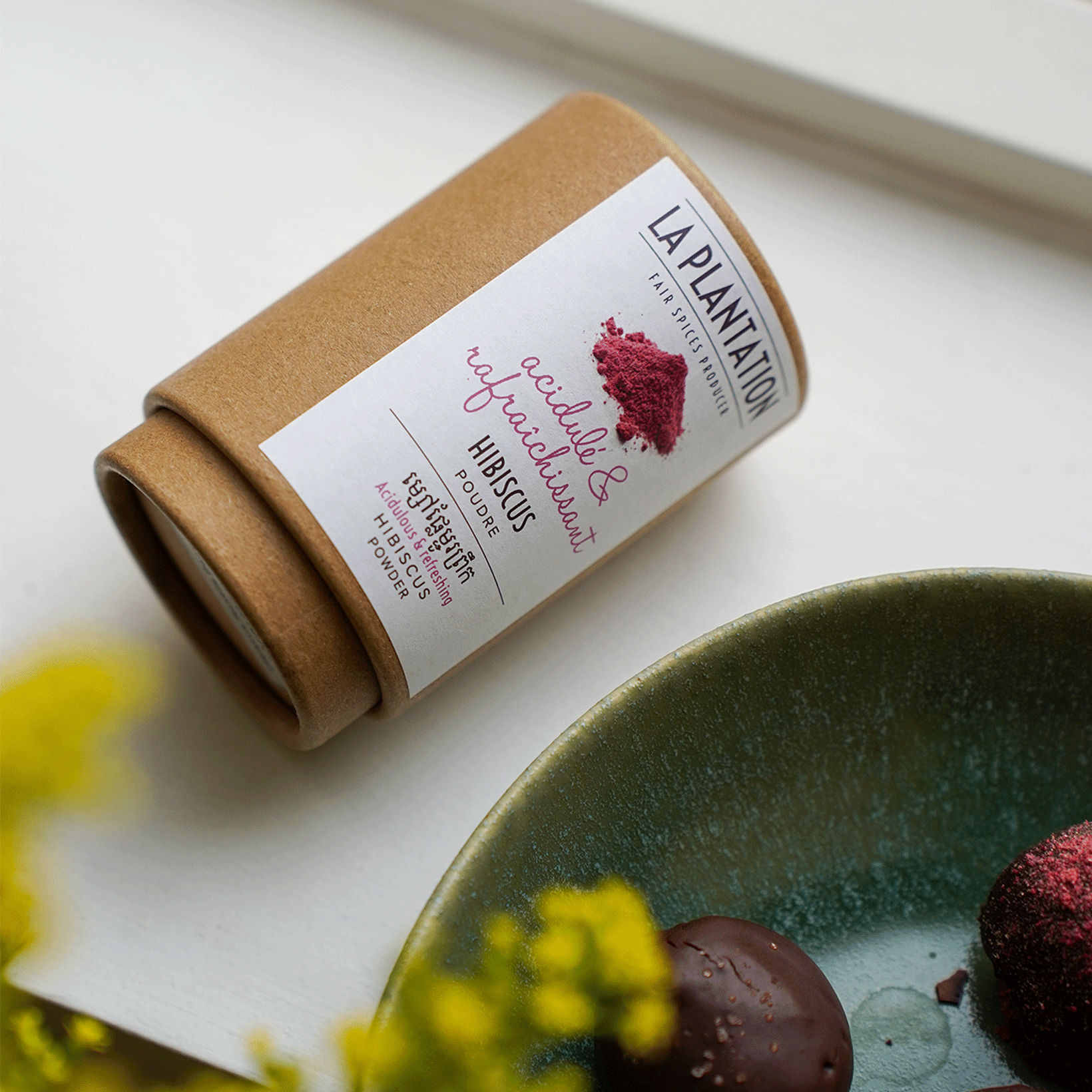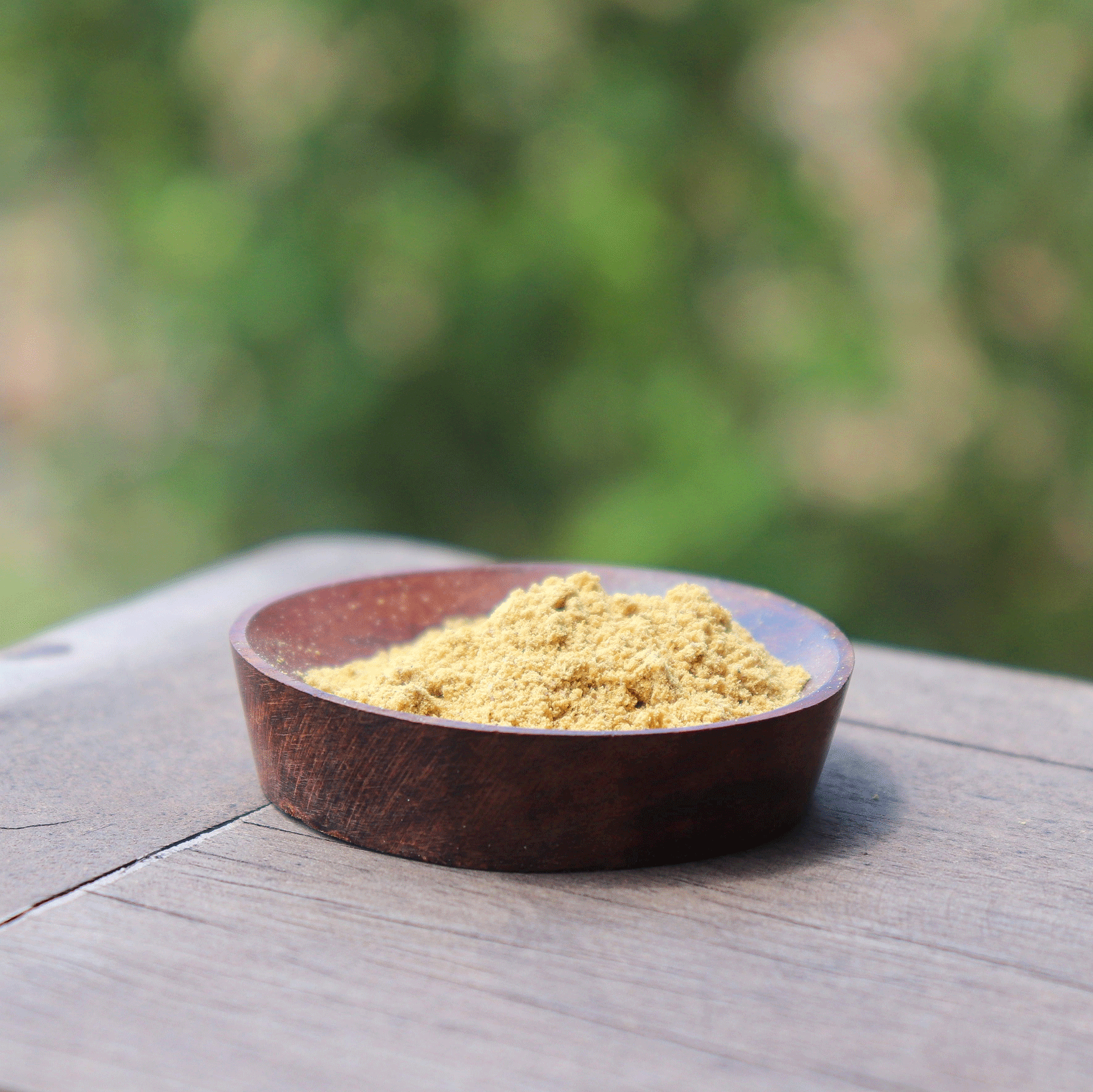
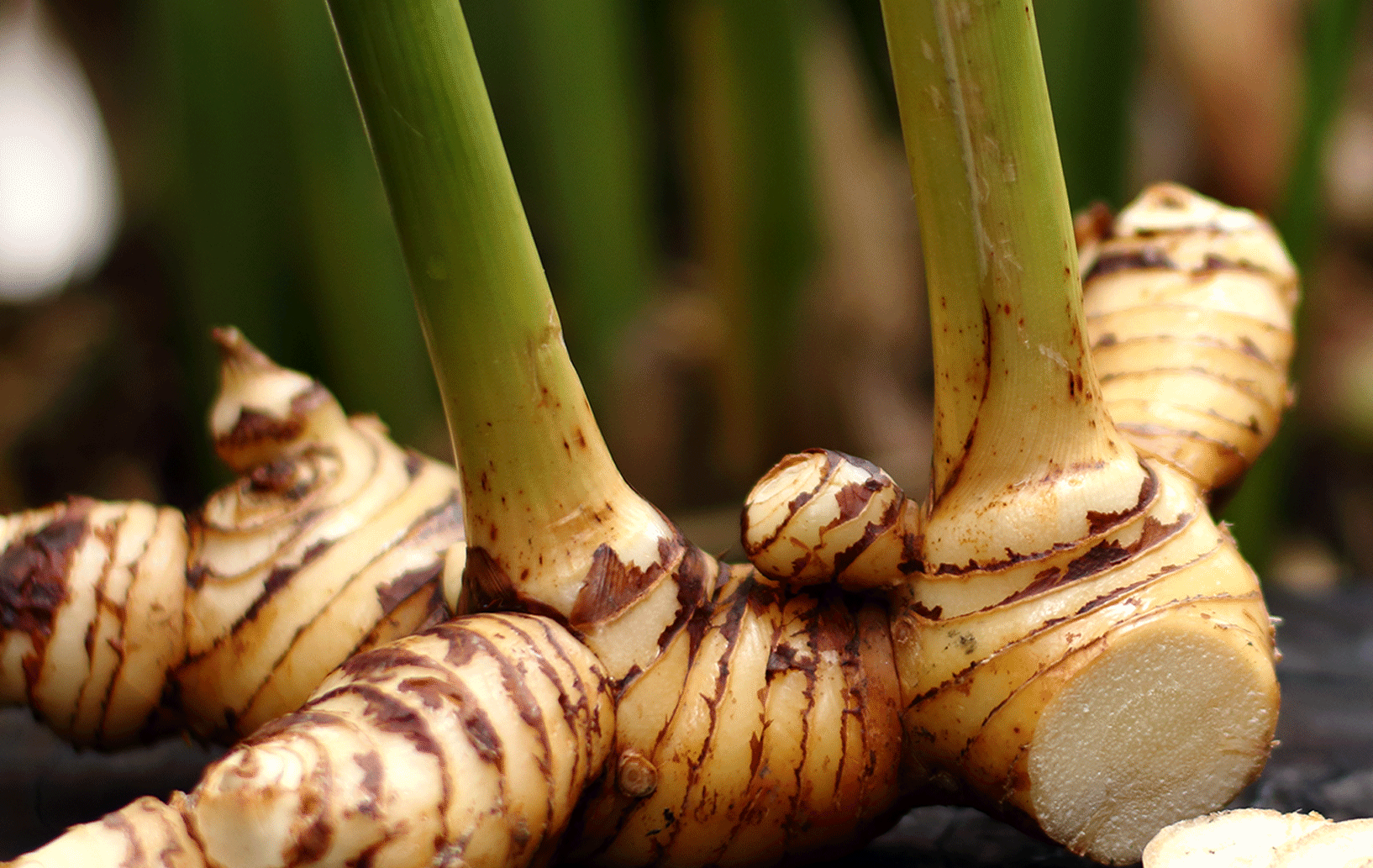
Discovering the mysterious Galangal
At the heart of Cambodian cooking lies a mysterious, fragrant spice that adds an exotic touch to many traditional dishes: galangal. This spice has its origins in the galanga plant, a fascinating plant that grows abundantly in the tropical regions of Cambodia. In this article, we take a look at how the galangal plant is grown, how it is used in Cambodian cooking, and how it can be combined with everyday dishes during the autumn and winter seasons.
What is galangal?
The origin of Cambodian galangal:
Galangal is native to South-East Asia, and has been closely associated with Cambodian cooking for centuries. It grows abundantly in the tropical regions of Cambodia, where its rhizome is used fresh, dried or powdered to flavour a variety of traditional dishes.
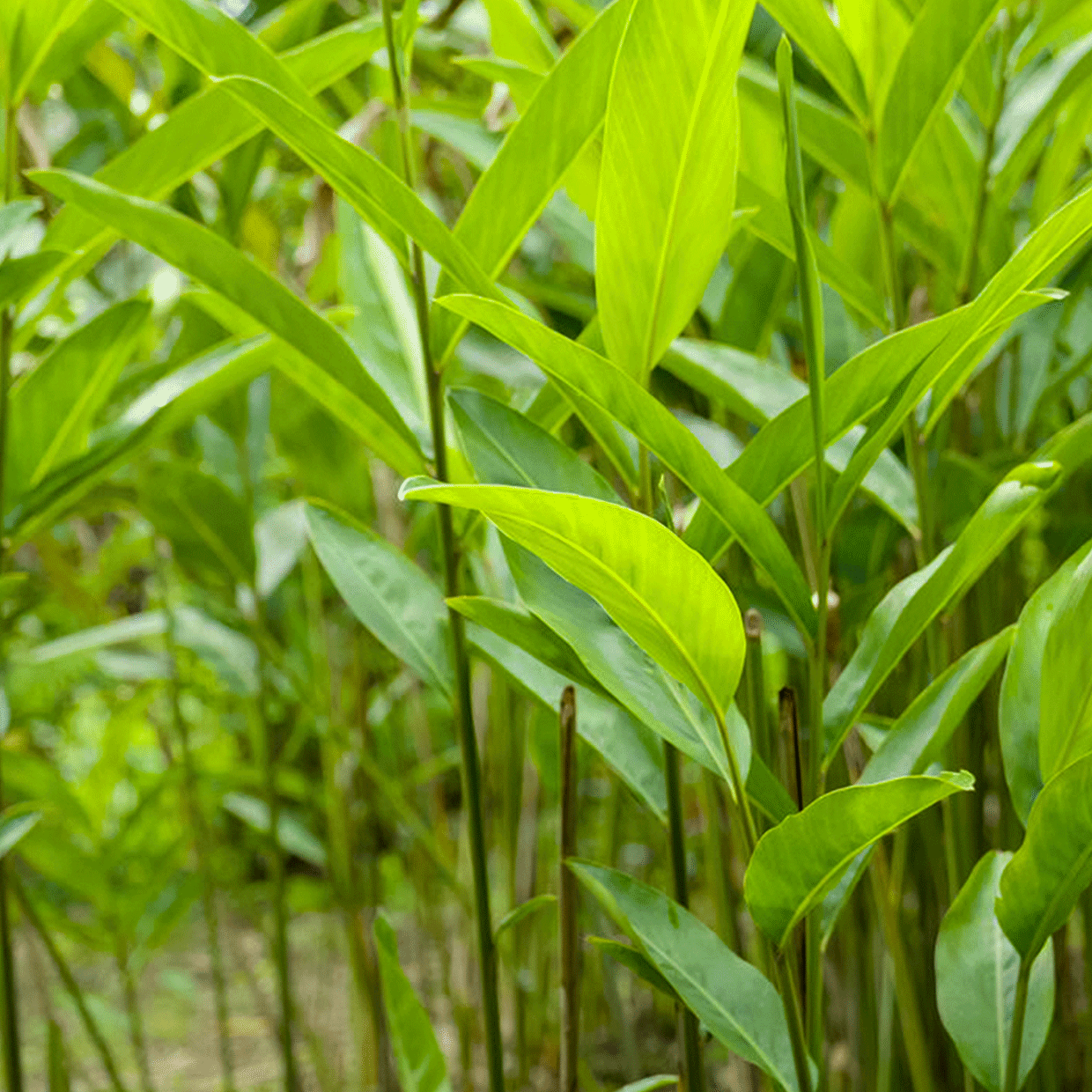
How does galangal grow?
Galangal (Alpinia galanga) is a perennial herbaceous plant belonging to the ginger family. It is characterised by long, lanceolate green leaves and fleshy underground rhizomes, which are the most widely used part of the plant for its distinctive aroma.
The galangal plant thrives in tropical and subtropical climates, where it prefers soils rich in organic matter and moderate exposure to sunlight. Galangal rhizomes are planted underground and begin to grow after a few months. After around 9 to 12 months, the rhizomes are ready to be harvested.
How is Galangal harvested?
Galangal is harvested by carefully digging up the rhizomes. Once harvested, the rhizomes are cleaned, peeled and prepared for later use. They can be eaten fresh, dried and then ground into powder, or used to infuse flavours into dishes.
Galangal’s unique flavour:
Galangal has a complex flavour, subtly balancing spicy, floral and lemony notes, with a hint of mustard. Compared with ginger, it is less pungent and more fragrant, making it an essential ingredient in many Cambodian recipes, and one to incorporate into cooking this season!
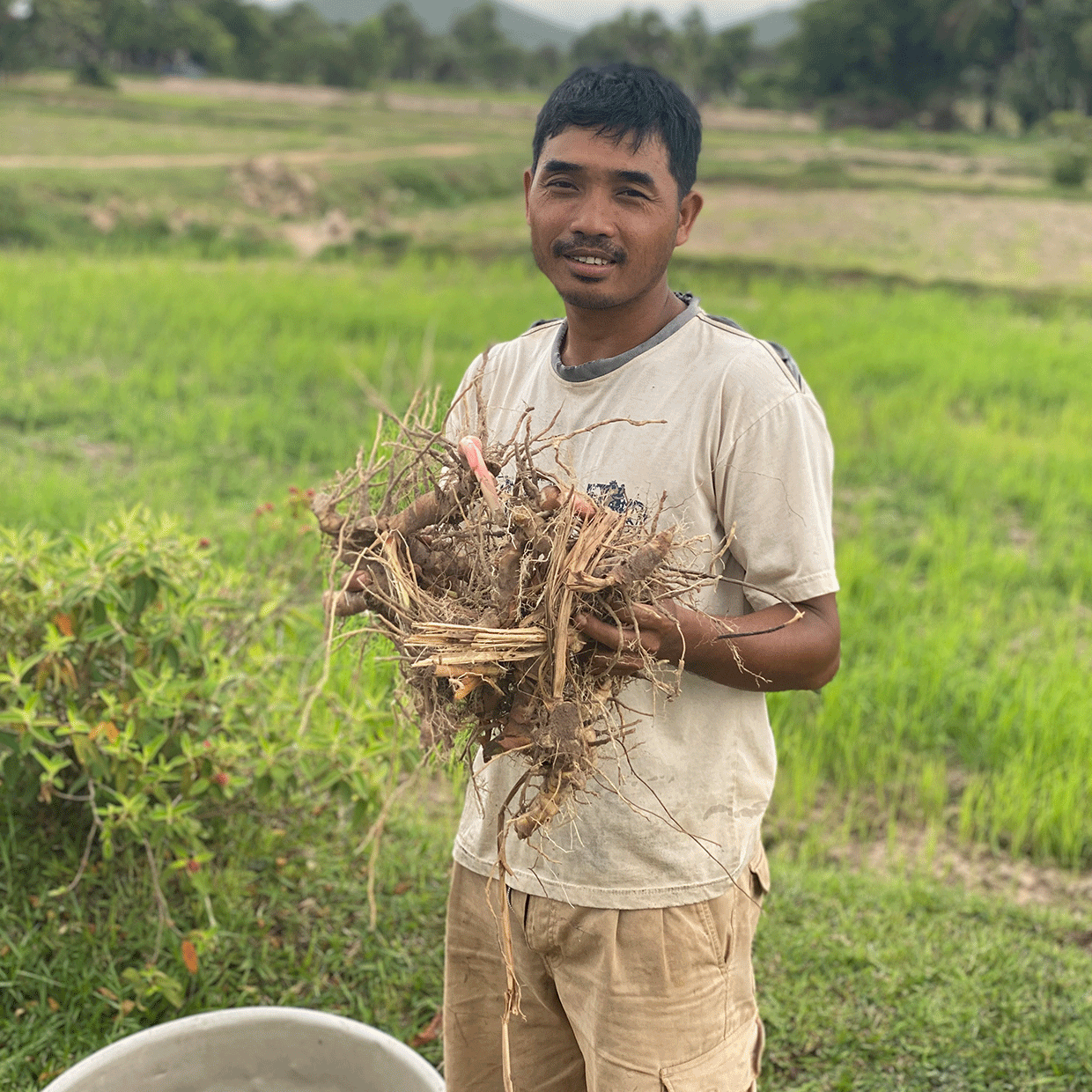
How to use Galangal?
Using Galangal in Cambodian cooking:
In Cambodia, galangal is a key ingredient in many traditional dishes. Its complex flavour is particularly appreciated in curries, soups and stir-fries. It plays a key role in the preparation of the famous ‘amok’, a fish curry steamed in banana leaves.
Famous Cambodian dishes that use Galangal:
– Amok: As mentioned above, amok curry is one of Cambodia’s most iconic dishes, where galangal plays a key role in flavouring the sauce.
– Samlor Kor Ko: This traditional Cambodian soup often contains galangal and is prepared with a variety of ingredients, including fish, pork, vegetables and herbs. It is often used in broths to give an aromatic base to soups.
– Loc Lac Beef: This popular Cambodian dish consists of pieces of beef sautéed in a sauce made with galangal, garlic and lemongrass, served with a garnish of crunchy vegetables.
– Stir-fried dishes: Galangal is also used in vegetable or meat stir-fries to add a fragrant note. It can be combined with garlic, lemongrass, pepper and other spices to create complex flavour blends.
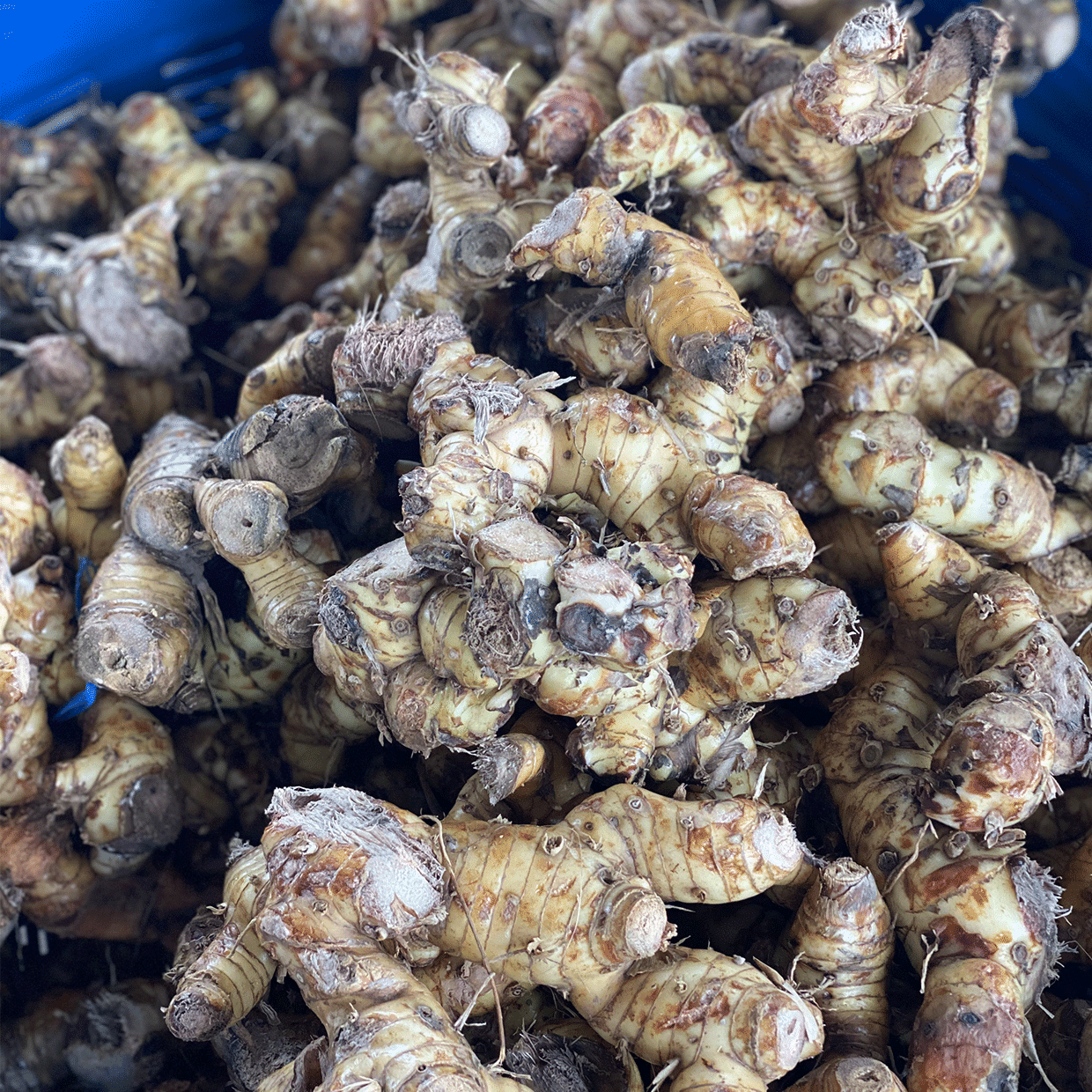
Galangal, a flavour enhancer:
Natural flavour enhancer, Galangal is an ideal spice to add to your soups, broths and other recipes where you combine different spices, as it will intensify these flavours while adding a characteristic note. It goes particularly well with Ginger, Turmeric and Lemongrass Stems.
How to choose the right Galangal:
As always, the most important thing when discovering this new spice is to focus on quality! A jar of spice should have an intense aroma and a beautiful colour. At La Plantation, we process the galangal into powder or petals on the day it is harvested. Packed immediately, the Galanga retains its unique aromas and all its freshness! After a few months in the boat, it’s available on our website or in delicatessens, to end up in your kitchen in record time.
Powder, Wild or Petals: which Galanga should you choose?
As lovers of this mysterious spice, we wanted to offer you different ways of discovering Galanga.
– Powder: Our beautiful Galanga roots are grown on our farm in Kampot, harvested, washed and cut by hand. After dehydration, they are ground into a powder. This is the ideal product for discovering Galanga in the kitchen, easy to sprinkle into your favourite autumn recipes.
– Wild: For even more intense flavour, we’ve decided to work with expert pickers in the forests of Cambodia, who unearth a few roots of Sauvage Galanga. An exceptional product that develops unparalleled strength. Ideal for Galanga lovers who want to discover an even more unique product.
– Petals: If you’ve ever used fresh Galanga, like ginger, you’ll love our Galanga Petals, which are ideal for infusing, both in herbal teas and in winter broths.
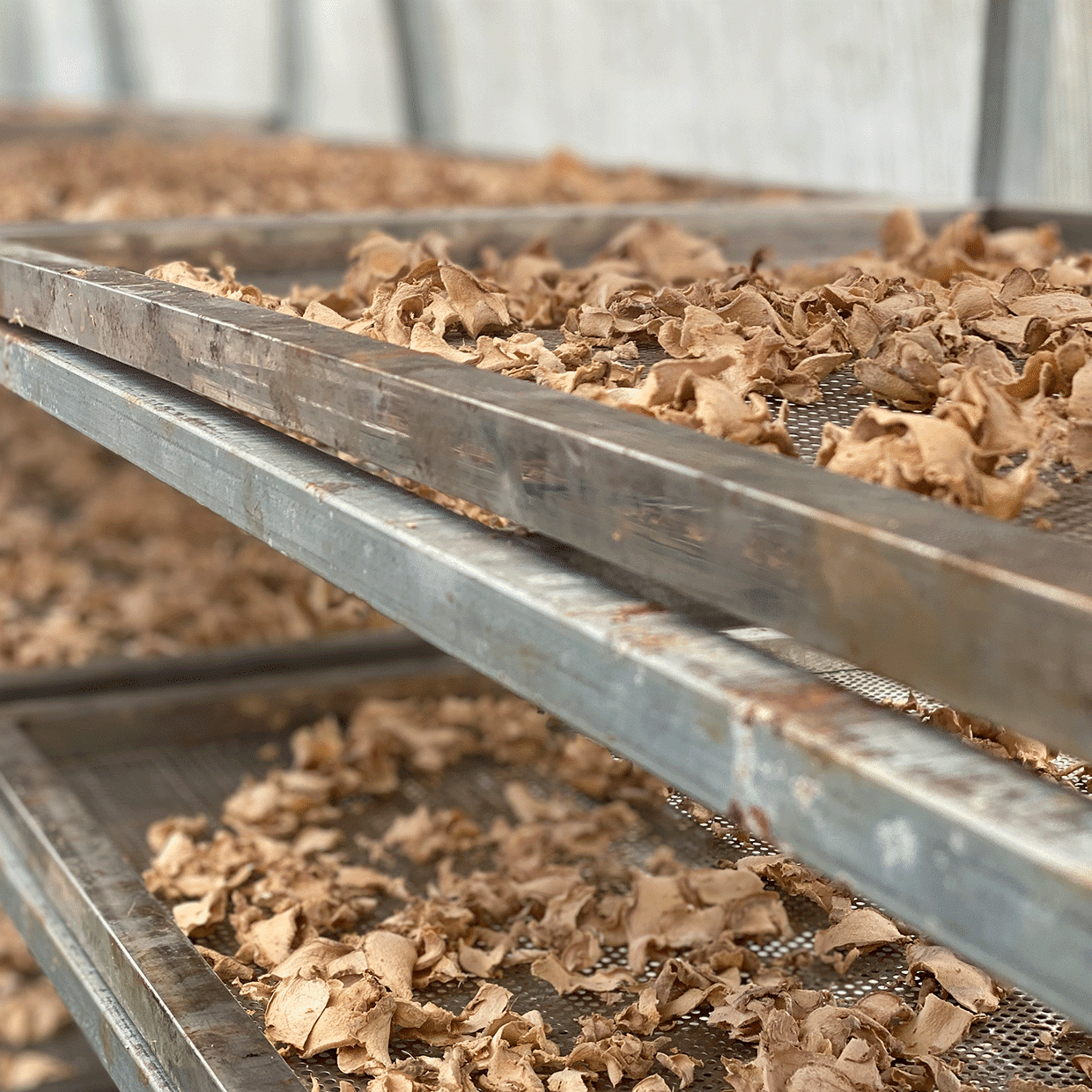
How to use galangal in cooking?
Although galangal is deeply rooted in Cambodian cuisine, it can also be used in Western cooking to create unique flavours. Here are a few possible combinations for autumn and winter dishes:
– Galangal stew: Add a few slices of galanga to your stew to give it an exotic, spicy touch. The flavour of galanga goes well with root vegetables and simmered meats.
– Pumpkin soup with Galangal: For a creamy, fragrant autumn flavors soup, add Wild Galanga to your pumpkin soup. Its floral notes will enhance the sweetness of the pumpkin.
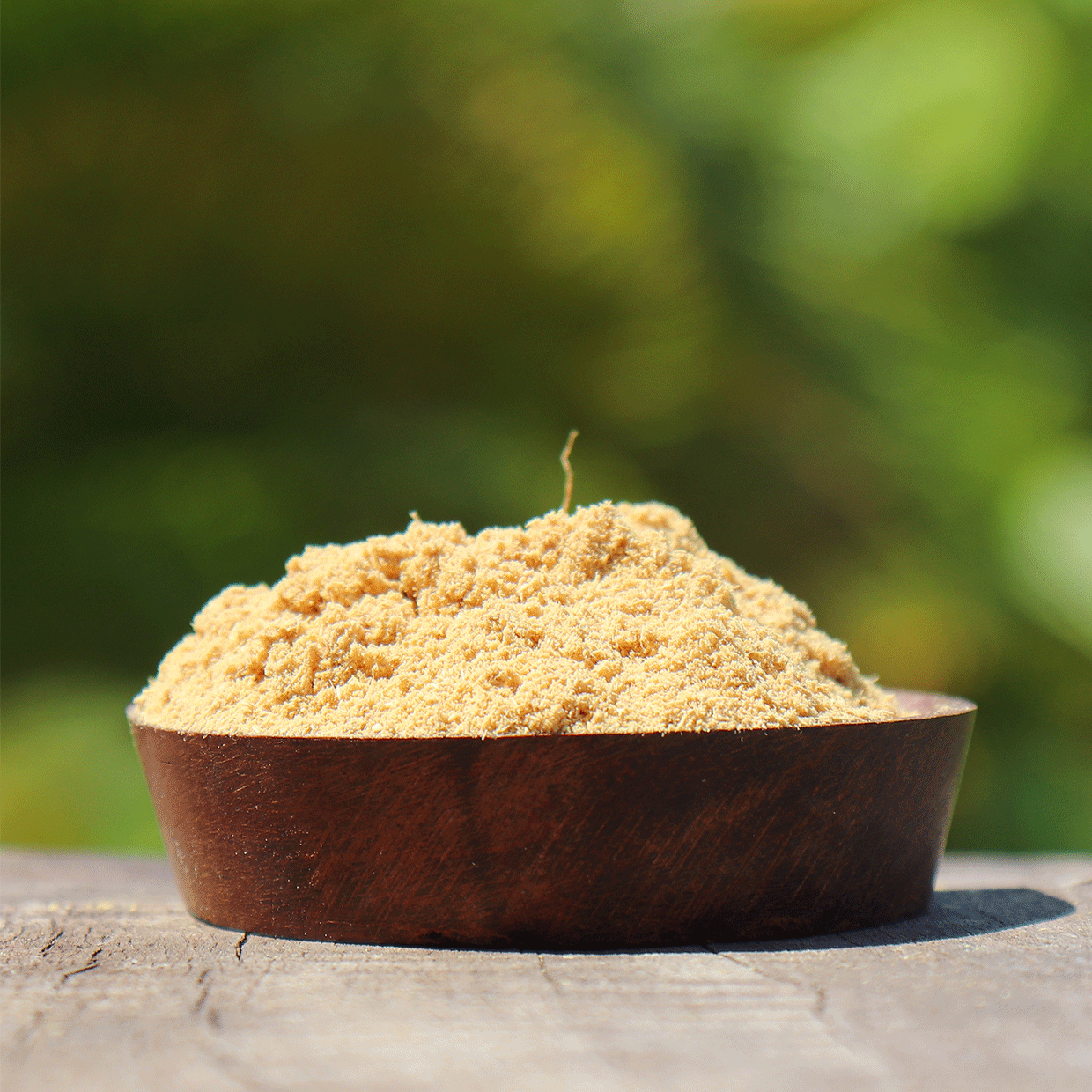
– Veal Blanquette with Galangal: Replace some of the traditional bouquet garni with powdered Galangal, for a French veal blanquette with a Cambodian twist. The galangal adds a unique aromatic dimension.
– Mushroom soup with Galangal: Add a pinch of powdered Galangal to your mushroom soup for a woody, spicy flavour. Galangal is a wonderful complement to the umami flavour of mushrooms.
– Gratin of squash with Galangal: When preparing a gratin of squash, sprinkle a little Wild Galangal between the layers of squash and cheese. This spice will enhance the sweetness of the squash and add an exotic touch.
– Galanga in soups: Galangal can be used in a variety of autumn and winter soups, such as lentil soups, root vegetable soups or chickpea soups. It adds an interesting aromatic dimension.
– Baked Salmon with Galangal: For a deliciously fragrant alternative to your baked salmon, marinate the fish in a sauce made with Wild Galangal, Lemongrass Stems, olive oil and honey. Baking in the oven will intensify the flavours.
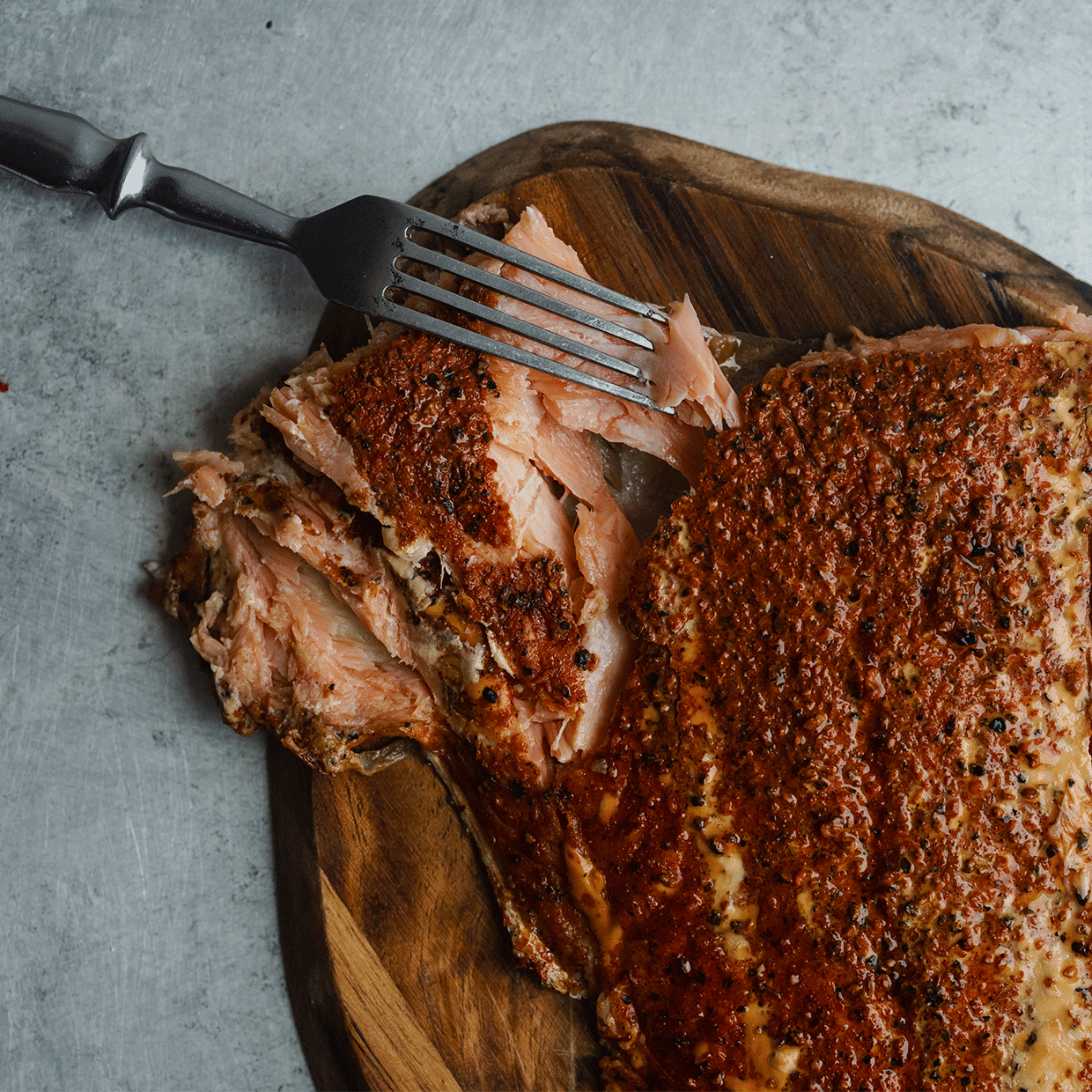
– Chicken with Herbs and Galangal: When preparing roast or braised chicken, add Galangal Petals to your herb and spice mix. The result will be a flavourful, fragrant chicken.
– Galangal in vegetable dishes: Galangal powder can also be used to flavour vegetable dishes such as pan-fried mushrooms, broccoli gratin or mashed potatoes.
– Gingerbread with Galangal: For a flavourful autumn or winter dessert, add Wild Galangal to your gingerbread recipe. It will add an exotic, fragrant note to this delicacy.
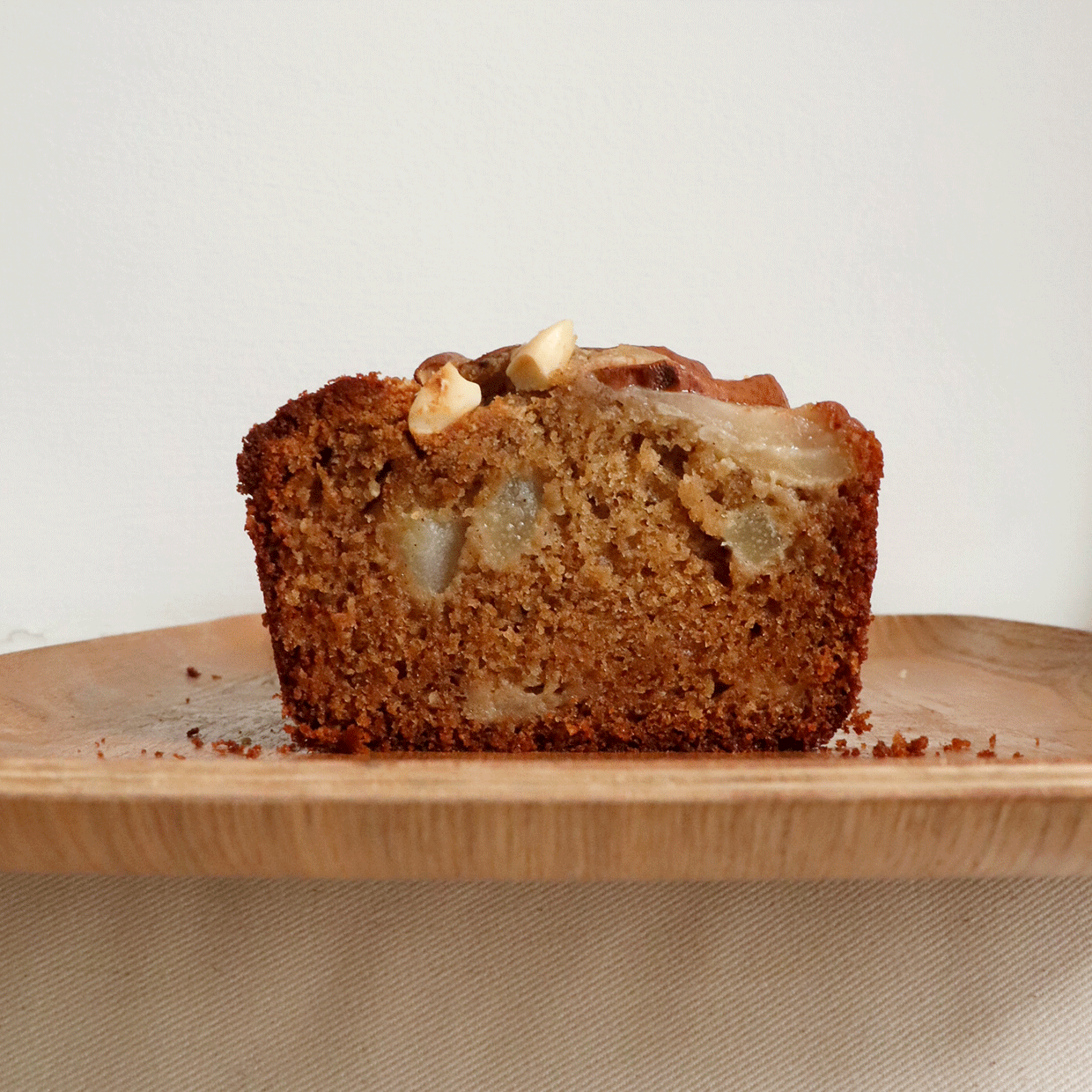
In conclusion, Cambodian galangal is a spice that embodies the very essence of Khmer cuisine. Its unique fragrance and complex flavours add extraordinary depth and dimension to many Cambodian dishes. For those looking to explore Cambodian cuisine, galangal is a spice not to be missed, as it opens the door to a world of unique and captivating flavours. By incorporating it into Western dishes, you can create unique taste experiences, adding a touch of mystery and exoticism to the autumn and winter seasons.
So let yourself be enchanted by galangal and explore the infinite possibilities it offers in your kitchen. Bon appétit!
